5.10.2016 | 17:44
HÚH on Ice
I think it is absolutely a terrific idea to link together the accomplishments of the Icelandic football team last summer, and the fantastic story of the Winnipeg Falcons Hockey team. For the roots of the two may lie deeper than anyone suspects. The folowing text is based upon information gathered from Wikipedia, the free encyclopedia and elsewhere.
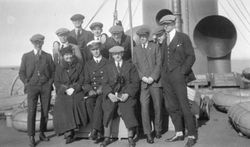 The Winnipeg Falcons (Their story in a Video) were a senior men's amateur ice hockey team based in Winnipeg, Manitoba. The Winnipeg Falcons won the 1920 Allan Cup. That team went on to represent Canada in the 1920 Olympic games held in Antwerp, Belgium. There the Falcons, soundly beating all their opponents, won for Canada the first ever Olympic Gold Medal in ice hockey and changed the way Hockey was played from there on.
The Winnipeg Falcons (Their story in a Video) were a senior men's amateur ice hockey team based in Winnipeg, Manitoba. The Winnipeg Falcons won the 1920 Allan Cup. That team went on to represent Canada in the 1920 Olympic games held in Antwerp, Belgium. There the Falcons, soundly beating all their opponents, won for Canada the first ever Olympic Gold Medal in ice hockey and changed the way Hockey was played from there on.
The Winnipeg Falcons hockey team was founded in 1911 with a roster of entirely Icelandic players who had not been able to join other Winnipeg teams due to ethnic prejudice. In their first season, 1911–1912, they finished at the bottom of their league. The next year, Konnie Johannesson and Frank Fredrickson joined the team. That team turned out to be a winner in the league.
The game of Ice Hockey that the young Icelanders took so readily to, can at least in part be traced back to a game played the Mi'kmaq Indians of Newfoundland and Nova Scotia.
The Mikmaq (also Micmac) are a First Nations people indigenous to Canada's Maritime Provinces and the Gaspé Peninsula of Quebec. They call this region Mikmaki. Others today live in Newfoundland and the northeastern region of Maine. the Mikmaq, a First Nations people of Nova Scotia, had from time immemorial played a stick-and-ball game. Canadian oral histories describe a traditional stick-and-ball game played by the Mikmaq in eastern Canada, and Silas Tertius Rand (in his 1894 Legends of the Micmacs) describes a Mikmaq ball game known as tooadijik.
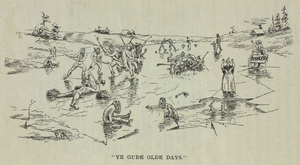 Windsor (Nova Scotia, Canada) claims that it is the birthplace of the ice hockey. This is citation from their site: There is near-irrefutable evidence that it was in Windsor that the game the world knows as ice hockey had its humble origins as early as the year 1800, on Long Pond. It is in the writings of Thomas Chandler Haliburton that the first known reference to a form of ice hockey can be found: the boys of Windsor’s King’s College School adapted their British game of hurley to the ice. And hurley-on-ice developed over time into the internationally popular game of ice hockey, still considered by most Canadians as their national sport.
Windsor (Nova Scotia, Canada) claims that it is the birthplace of the ice hockey. This is citation from their site: There is near-irrefutable evidence that it was in Windsor that the game the world knows as ice hockey had its humble origins as early as the year 1800, on Long Pond. It is in the writings of Thomas Chandler Haliburton that the first known reference to a form of ice hockey can be found: the boys of Windsor’s King’s College School adapted their British game of hurley to the ice. And hurley-on-ice developed over time into the internationally popular game of ice hockey, still considered by most Canadians as their national sport.
In fact, this theory is strongly connected with the theory that ice hockey is a game adopted from Mi’kmaq Indians. The main difference is that Mi’kmaq Indians are not explicitly mentioned in this theory (but the place is still the same, Nova Scotia, Canada).
Since the nineteenth century, the Mikmaq were credited with inventing the ice hockey stick. The oldest known hockey stick was made between 1852 and 1856. Recently, it was appraised at $4 million US and sold for $2.2 million US. The stick was carved by Mi’kmaq from Nova Scotia, who made it from hornbeam, also known as ironwood.
As it happens Canada's Maritime Provinces is where the Norse explorer; Leifur Eiríksson, and others who followed in the wake of his ships, are known to have settled around the year 1000. The Mi'kmaq´s may indeed well be the "Skrælingar" that are so frequently mentioned in the Icelandic Sagas.
Dating to around the year 1000, L'Anse aux Meadows is widely accepted as evidence of pre-Columbian trans-oceanic contact. It is notable for its possible connection with the attempted colony of Vinland established by Leif Erikson around the same period or, more broadly, with Norse exploration of the Americas. It was named a World Heritage site by UNESCO in 1978.
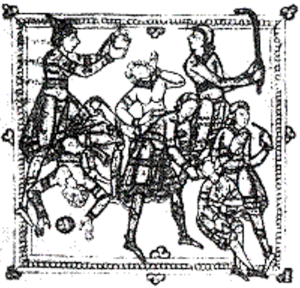 And the Norse/Icelanders played Ísknattleikur; a similar game to Icehockey, that had been played for a thousand years or more by the Norse, as documented in the Icelandic sagas. Today, no one knows exact rules of Knattleikur, but some information has survived from the Viking Age in Iceland around the 9th century..
And the Norse/Icelanders played Ísknattleikur; a similar game to Icehockey, that had been played for a thousand years or more by the Norse, as documented in the Icelandic sagas. Today, no one knows exact rules of Knattleikur, but some information has survived from the Viking Age in Iceland around the 9th century..
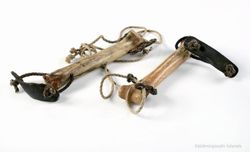 It is conjectured by some that the playing field was lined, usually played on a flat ice covered surface, e.g. a frozen pond (though bumpy, landbased ice, svell, is also mentioned).
It is conjectured by some that the playing field was lined, usually played on a flat ice covered surface, e.g. a frozen pond (though bumpy, landbased ice, svell, is also mentioned).

|
Tengja árangurinn við Fálkana |
| Tilkynna um óviðeigandi tengingu við frétt | |
Flokkur: Stjórnmál og samfélag | Breytt s.d. kl. 17:49 | Facebook
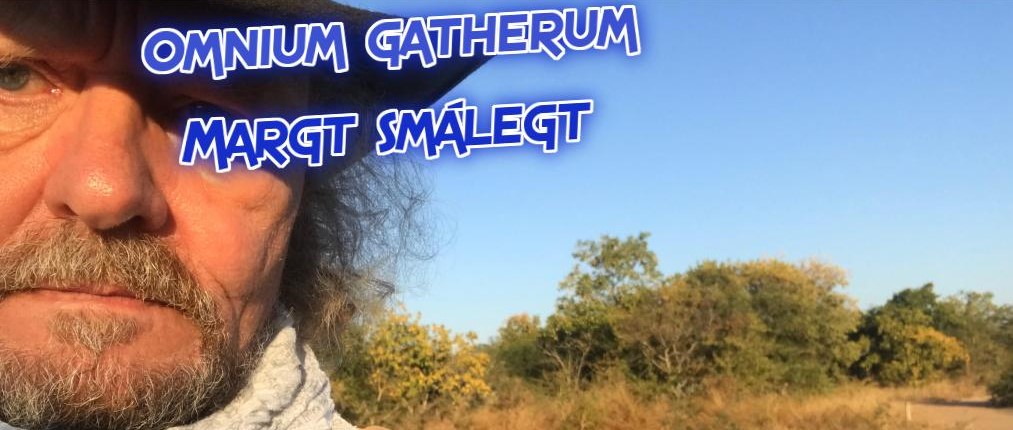

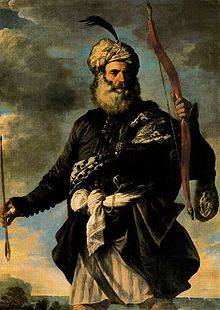


 Dagný
Dagný
 Sigrún Jónsdóttir
Sigrún Jónsdóttir
 Anna Einarsdóttir
Anna Einarsdóttir
 Anna Gísladóttir
Anna Gísladóttir
 Arnar Pálsson
Arnar Pálsson
 Arinbjörn Kúld
Arinbjörn Kúld
 Ketill Sigurjónsson
Ketill Sigurjónsson
 Sóldís Fjóla Karlsdóttir
Sóldís Fjóla Karlsdóttir
 Egill Bjarnason
Egill Bjarnason
 Baldur Kristjánsson
Baldur Kristjánsson
 Bergljót Gunnarsdóttir
Bergljót Gunnarsdóttir
 Bjarni Harðarson
Bjarni Harðarson
 Sigurbjörn Friðriksson
Sigurbjörn Friðriksson
 Anna
Anna
 Gunnhildur Sigurjónsdóttir
Gunnhildur Sigurjónsdóttir
 Guðmundur Ásgeirsson
Guðmundur Ásgeirsson
 brahim
brahim
 Charles Robert Onken
Charles Robert Onken
 Hannes
Hannes
 Tryggvi Hjaltason
Tryggvi Hjaltason
 Anna S. Árnadóttir
Anna S. Árnadóttir
 Hrannar Baldursson
Hrannar Baldursson
 Dúa
Dúa
 Drífa Kristjánsdóttir
Drífa Kristjánsdóttir
 Edda Agnarsdóttir
Edda Agnarsdóttir
 Viðar Eggertsson
Viðar Eggertsson
 Einar G. Harðarson
Einar G. Harðarson
 Erla J. Steingrímsdóttir
Erla J. Steingrímsdóttir
 Evrópusamtökin, www.evropa.is
Evrópusamtökin, www.evropa.is
 Eydís Hentze Pétursdóttir
Eydís Hentze Pétursdóttir
 Friðrik Hansen Guðmundsson
Friðrik Hansen Guðmundsson
 Finnur Bárðarson
Finnur Bárðarson
 Fjarki
Fjarki
 Púkinn
Púkinn
 Brosveitan - Pétur Reynisson
Brosveitan - Pétur Reynisson
 Brattur
Brattur
 Hjálmtýr V Heiðdal
Hjálmtýr V Heiðdal
 Guðmundur Pálsson
Guðmundur Pálsson
 Graceperla
Graceperla
 Grétar Mar Jónsson
Grétar Mar Jónsson
 Greta Björg Úlfsdóttir
Greta Björg Úlfsdóttir
 Guðjón Ó.
Guðjón Ó.
 Guðmundur Júlíusson
Guðmundur Júlíusson
 Gulli litli
Gulli litli
 Gylfi Guðmundsson
Gylfi Guðmundsson
 Halla Rut
Halla Rut
 Hallmundur Kristinsson
Hallmundur Kristinsson
 Haraldur Rafn Ingvason
Haraldur Rafn Ingvason
 Þorkell Sigurjónsson
Þorkell Sigurjónsson
 Helgi Jóhann Hauksson
Helgi Jóhann Hauksson
 Aðalheiður Haraldsdóttir
Aðalheiður Haraldsdóttir
 Kaleb Joshua
Kaleb Joshua
 Hildur Helga Sigurðardóttir
Hildur Helga Sigurðardóttir
 Himmalingur
Himmalingur
 Hjalti Rúnar Ómarsson
Hjalti Rúnar Ómarsson
 Sigga Hjólína
Sigga Hjólína
 Bókaútgáfan Hólar
Bókaútgáfan Hólar
 Höskuldur Búi Jónsson
Höskuldur Búi Jónsson
 Hrafn Andrés Harðarson
Hrafn Andrés Harðarson
 Hugrún Jónsdóttir
Hugrún Jónsdóttir
 Óskar Arnórsson
Óskar Arnórsson
 Þráinn Jökull Elísson
Þráinn Jökull Elísson
 Svava frá Strandbergi
Svava frá Strandbergi
 Kári Gautason
Kári Gautason
 Jón Baldur Lorange
Jón Baldur Lorange
 Jenný Stefanía Jensdóttir
Jenný Stefanía Jensdóttir
 Jens Guð
Jens Guð
 Jóhann G. Frímann
Jóhann G. Frímann
 Jóhannes Þór Skúlason
Jóhannes Þór Skúlason
 Jóna Á. Gísladóttir
Jóna Á. Gísladóttir
 Jonni
Jonni
 Bergur Thorberg
Bergur Thorberg
 Kalikles
Kalikles
 ÞJÓÐARSÁLIN
ÞJÓÐARSÁLIN
 Hjalti Tómasson
Hjalti Tómasson
 kiza
kiza
 Hrafnhildur Ýr Vilbertsdóttir
Hrafnhildur Ýr Vilbertsdóttir
 Hrafnhildur Þórarinsdóttir
Hrafnhildur Þórarinsdóttir
 Kristberg Snjólfsson
Kristberg Snjólfsson
 Kolbrún Hilmars
Kolbrún Hilmars
 Kristinn Theódórsson
Kristinn Theódórsson
 OM
OM
 Lilja Guðrún Þorvaldsdóttir
Lilja Guðrún Þorvaldsdóttir
 SeeingRed
SeeingRed
 Lýður Pálsson
Lýður Pálsson
 Lýður Árnason
Lýður Árnason
 Margrét St Hafsteinsdóttir
Margrét St Hafsteinsdóttir
 Máni Ragnar Svansson
Máni Ragnar Svansson
 Marinó G. Njálsson
Marinó G. Njálsson
 Marinó Már Marinósson
Marinó Már Marinósson
 Magnús Bergsson
Magnús Bergsson
 Mofi
Mofi
 Sigmar Þór Sveinbjörnsson
Sigmar Þór Sveinbjörnsson
 Jóhanna Magnúsdóttir
Jóhanna Magnúsdóttir
 Nexa
Nexa
 Sigurður Þór Guðjónsson
Sigurður Þór Guðjónsson
 Aðalsteinn Baldursson
Aðalsteinn Baldursson
 Jón Svavarsson
Jón Svavarsson
 Páll Vilhjálmsson
Páll Vilhjálmsson
 Sandra María Sigurðardóttir
Sandra María Sigurðardóttir
 Sveinbjörn Kristinn Þorkelsson
Sveinbjörn Kristinn Þorkelsson
 Vilhjálmur Örn Vilhjálmsson
Vilhjálmur Örn Vilhjálmsson
 Ragnar Þór Ingólfsson
Ragnar Þór Ingólfsson
 Heimir Tómasson
Heimir Tómasson
 Sæmundur Bjarnason
Sæmundur Bjarnason
 Salvör Kristjana Gissurardóttir
Salvör Kristjana Gissurardóttir
 Sammý
Sammý
 Sigurður Fannar Guðmundsson
Sigurður Fannar Guðmundsson
 Sigurður Þórðarson
Sigurður Þórðarson
 Sigurður Ingólfsson
Sigurður Ingólfsson
 Sigþrúður Pálsdóttir
Sigþrúður Pálsdóttir
 Sigurveig Eysteins
Sigurveig Eysteins
 Sigurður Jónsson
Sigurður Jónsson
 Axel Jóhann Hallgrímsson
Axel Jóhann Hallgrímsson
 Auðun Gíslason
Auðun Gíslason
 Óskar Þorkelsson
Óskar Þorkelsson
 Helga skjol
Helga skjol
 Gunnar Skúli Ármannsson
Gunnar Skúli Ármannsson
 hilmar jónsson
hilmar jónsson
 Steinunn Helga Sigurðardóttir
Steinunn Helga Sigurðardóttir
 Þorsteinn Briem
Þorsteinn Briem
 Kristín M. Jóhannsdóttir
Kristín M. Jóhannsdóttir
 Grétar Eiríksson
Grétar Eiríksson
 Sigurður Árnason
Sigurður Árnason
 Svala Jónsdóttir
Svala Jónsdóttir
 Svartagall
Svartagall
 Óskar Helgi Helgason
Óskar Helgi Helgason
 TARA
TARA
 Þarfagreinir
Þarfagreinir
 Þór Saari
Þór Saari
 Þorsteinn Helgi Steinarsson
Þorsteinn Helgi Steinarsson
 Þórdís Bachmann
Þórdís Bachmann
 Þór Ludwig Stiefel TORA
Þór Ludwig Stiefel TORA
 Sigurður Rósant
Sigurður Rósant
 Valdimar H Jóhannesson
Valdimar H Jóhannesson
 Andrea
Andrea
 Villi Asgeirsson
Villi Asgeirsson
 Margrét Sigurðardóttir
Margrét Sigurðardóttir
 Guðsteinn Haukur Barkarson
Guðsteinn Haukur Barkarson
 Steinþór Ásgeirsson
Steinþór Ásgeirsson
 Sveinn Atli Gunnarsson
Sveinn Atli Gunnarsson
Bæta við athugasemd [Innskráning]
Ekki er lengur hægt að skrifa athugasemdir við færsluna, þar sem tímamörk á athugasemdir eru liðin.